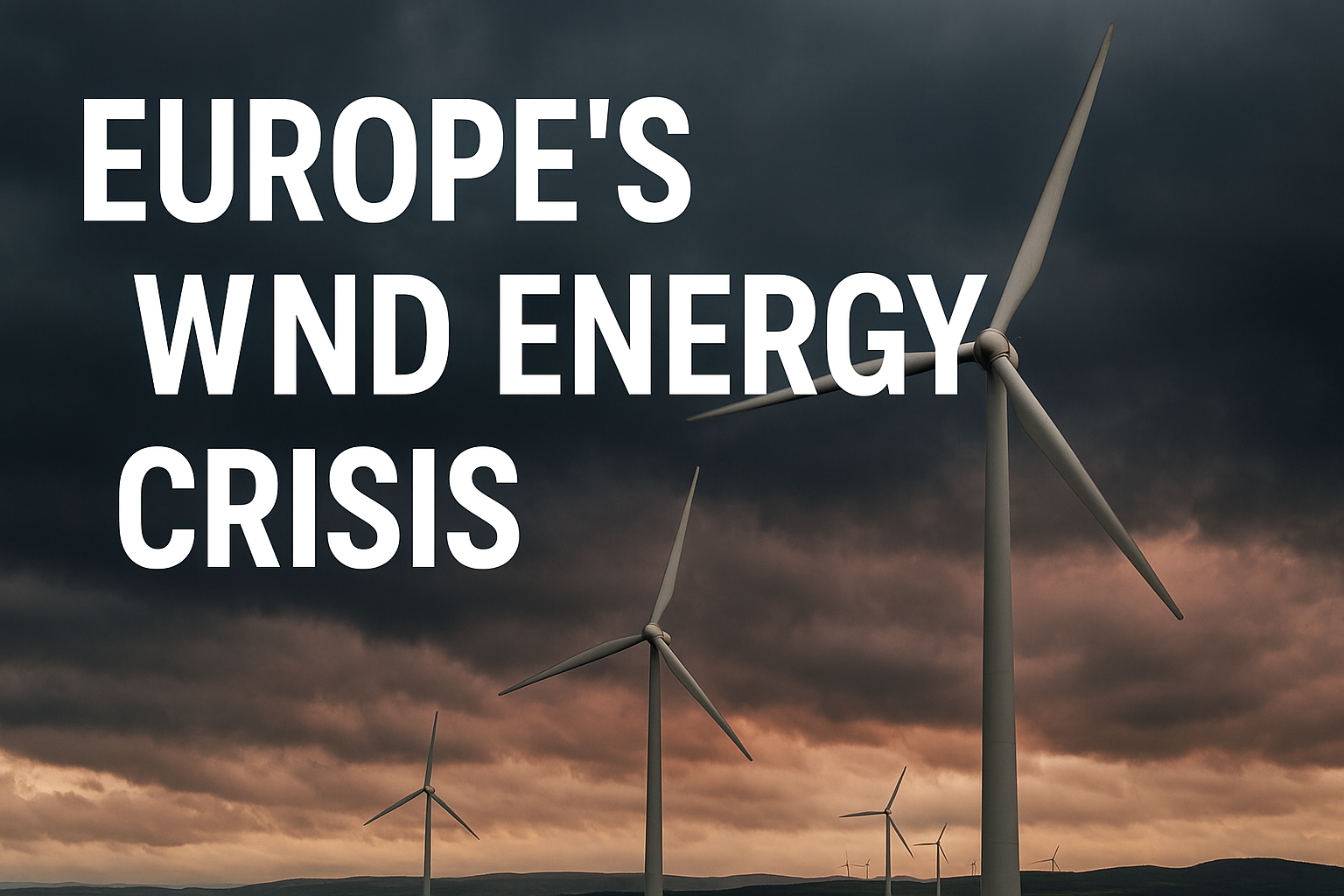Wind Power Crisis in Europe
Europe’s biggest renewable energy producers—Spain, France, and Germany—have cut back record amounts of wind power this year, as electricity grids struggled to handle an unprecedented surge in renewable output. (Bloomberg News)
From January to September 2025, these nations, along with southern Sweden, recorded the steepest declines in wind generation, according to data from the London Stock Exchange Group (LSEG).
—highlight The curtailments—the deliberate reduction of renewable generation—highlight a growing problem for Europe’s clean energy transition. While the region rapidly expands its wind and solar capacity, grid investments and storage systems lag far behind.
Why It Matters
Curtailment happens when the power grid cannot absorb all the renewable energy being generated. In such cases, some wind farms are ordered to shut down, while others voluntarily reduce production when prices drop too low.
These shutdowns represent a significant loss of clean energy potential and often translate into higher costs for consumers, as grid operators compensate producers for lost generation.
Energy analysts warn that these record levels of curtailment reflect a structural challenge in Europe’s renewable rollout: generation capacity is growing faster than transmission infrastructure can handle.
“We’re producing more renewable energy than the grid can transport,” said one analyst familiar with the LSEG data. “Without faster grid upgrades, much of that green power will continue to go to waste.”
Country Highlights
📊 Spain recorded the highest rate of wind curtailment this year, cutting 19.6% of total generation in May—three times more than in the same month last year.
🇫🇷 France saw a record decline in August, with 11.2% of wind energy curtailed.
🇩🇪 Germany, Europe’s renewable powerhouse, reported its largest reduction of 7.3% in March.
Western Denmark also saw a modest decline, while the U.K. was not included in the dataset.
The Bigger Picture
The issue reflects a paradox in Europe’s green energy push: the continent is producing more clean electricity than ever, yet wasting more of it due to outdated infrastructure.
Rapid renewable expansion without parallel investments in storage, smart grids, and cross-border interconnections could undermine progress toward net-zero goals.
Experts stress that solving the grid bottleneck is essential for ensuring every megawatt of renewable power is used effectively—rather than being shut off during peak production.
What’s Next
European policymakers are under increasing pressure to accelerate grid modernization and battery storage investments. The European Commission has identified grid congestion as a top priority for achieving its 2030 renewable targets.
In the meantime, wind power curtailments are expected to remain high through winter 2025, as strong seasonal winds meet limited grid capacity.
If grid upgrades lag further behind, Europe could face not just wasted clean power but also higher energy costs and a slower decarbonization pace.
Conclusion
Europe’s wind energy success story now faces a critical challenge: turning record renewable generation into usable power. Without urgent infrastructure investment, even the cleanest energy will continue to be curtailed — and the continent’s climate goals could drift further out of reach.
FAQs
1. Why are European countries cutting back on wind power?
European nations like Spain, France, and Germany are reducing wind generation because their power grids can’t absorb excess renewable electricity. When supply exceeds grid capacity, operators deliberately shut down turbines to prevent overloads — a process known as curtailment.
2. What does “wind power curtailment” mean?
Curtailment is when wind or solar energy production is intentionally reduced or stopped, even though the source is available. This happens when the grid is overloaded or electricity prices drop too low to sustain operations.
3. Which European countries are most affected by curtailment?
According to LSEG data, Spain, France, and Germany recorded the highest levels of curtailment in 2025. Spain cut nearly 20% of its wind output in May, France reduced 11% in August, and Germany 7% in March.
4. How does wind power curtailment affect consumers?
Curtailment can raise consumer energy costs because grid operators often compensate power producers for lost generation. It also wastes renewable energy that could otherwise replace fossil fuels.
5. How can Europe reduce wind power curtailment?
Experts recommend expanding grid capacity, investing in battery storage, and improving cross-border energy connections. These upgrades will help Europe store or transmit excess wind energy instead of wasting it.
6. Will wind power curtailment slow Europe’s clean energy goals?
If not addressed quickly, yes. Curtailment reduces the effective use of renewable energy and could delay Europe’s 2030 clean energy and net-zero emission targets. Modernizing the grid is key to maintaining momentum.




